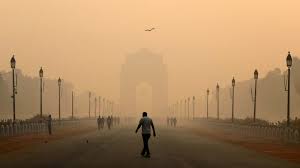Several factors contributed to maintaining favourable post-Diwali air quality this year, including warm temperatures and strong winds.
A warm October and strong winds saved Delhi residents this Diwali as the national capital’s air quality index (AQI) marked a slight spike a day after on November 1 despite the usual cracker-bursting practice.
The 24-hour average air quality on the day before Diwali and Diwali- Wednesday and Thursday respectively- in Delhi this year was worse than in the previous couple of years. However, the pollution level was the lowest since 2015, barring 2022, on Friday morning.
The post-Diwali 24-hour average air quality index was 339 on Friday, only 11 points higher than the value recorded on Thursday (328). The readings of both days were categorised as ‘very poor,’ according to the Central Pollution Control Board (CPCB).
This year’s post-Diwali air quality was better than 358 on the day after Diwali in 2023 (November 13). In 2021, Delhi recorded the worst post-Diwali air quality day with the AQI at 462.
Why Pollution Levels Were Low Post Diwali
Several factors contributed to maintaining favourable post-Diwali air quality this year, including warm temperatures and strong winds in the national capital.
Last year, Diwali was celebrated on November 13, when the temperature conditions were much cooler — the monthly average minimum was 13 degrees Celsius and the maximum was 27.8 degrees Celsius.
This year, the festival was celebrated in late October, when the temperature was recorded much higher than last few years. The India Meteorological Department (IMD) said this year’s October was the warmest in 73 years.
The monthly maximum and minimum averages recorded at the city’s Safdarjung weather station in October were 35.1 degrees Celsius and 21.2 degrees Celsius respectively.
Another meteorological condition that favoured the air quality was wind speed which was as low as 3 to 7 kmph until Friday morning. Gradually, the wind speed increased to 15 kmph from noon onward. An average wind speed of 10 kmph is considered favourable for the dispersal of pollutants.


Comment here